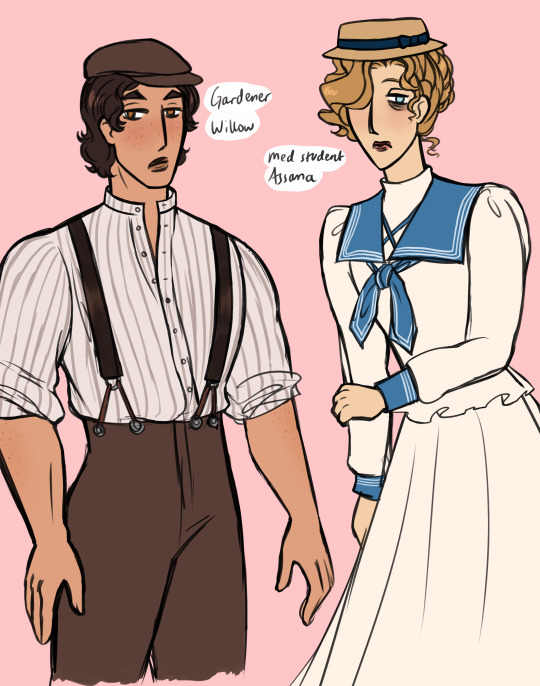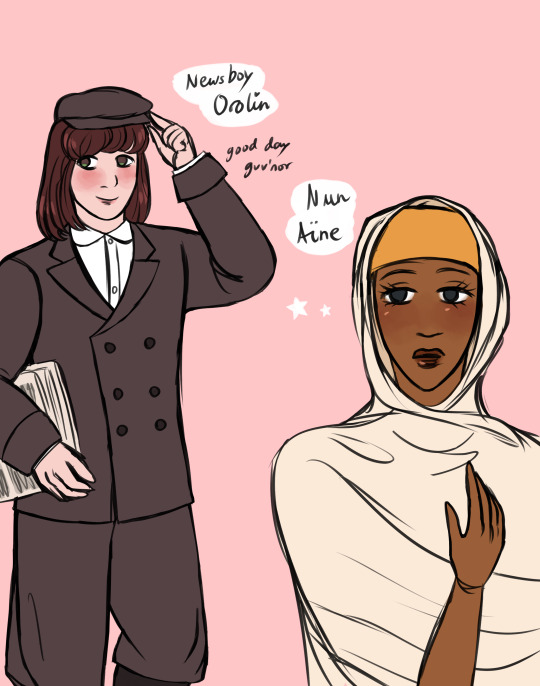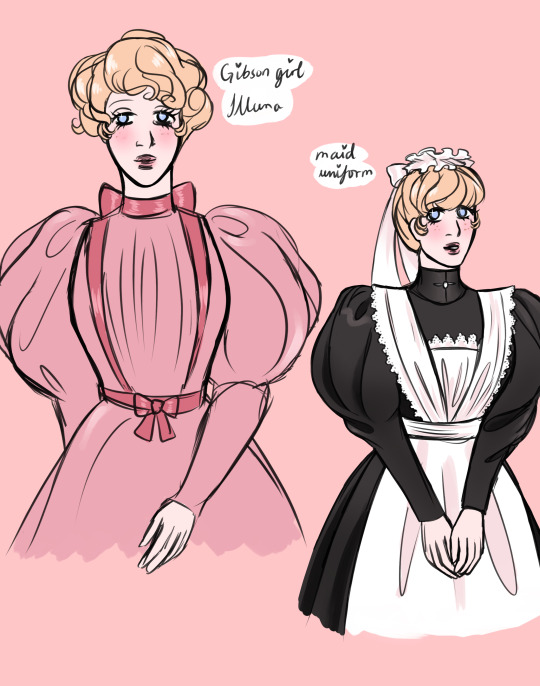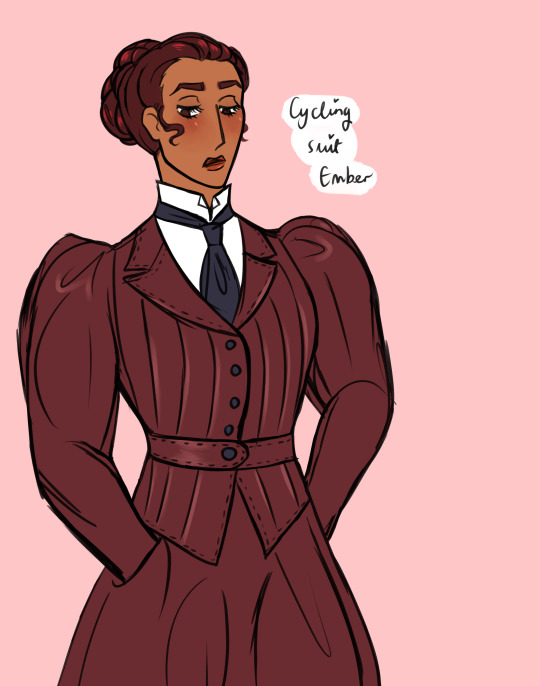#The Orthodox Tewahedo
Explore tagged Tumblr posts
Text
The Orthodox Tewahedo Biblical Canon: A Unique Version of the Christian Bible
The Orthodox Tewahedo Biblical Canon holds a unique position within the Ethiopian and Eritrean Orthodox Tewahedo Churches, encompassing a rich tapestry of 81 books that shape the spiritual and cultural identity of these faith communities. This expansive collection includes not only the familiar books found in other Christian canons but also several additional writings that offer distinct insights…

View On WordPress
#African History#East African Bible#east african history#Eritrean History#Eritrean Orthodox Tewahedo Churches#Ethiopian Bible#Ethiopian Orthodox Tewahedo Churches#The Orthodox Tewahedo#The Orthodox Tewahedo Bible
0 notes
Text
Church of St. George, Lalibela, Ethiopia: The Church of Saint George is one of eleven rock-hewn monolithic churches in Lalibela, a town in the Amhara Region of Ethiopia. Originally named Roha, the historical and religious site was named Lalibela after the King Gebre Mesqel Lalibela of the Zagwe dynasty, who commissioned its construction. Wikipedia
#Church of St. George#Ethiopian Orthodox Tewahedo Church#rock-hewn church#Monolithic church#North Wollo Zone#Amhara Region#Ethiopia#Lalibela#africa#african continent
389 notes
·
View notes
Text

Emperor Menelik II of Ethiopia. European School.
#european school#ethiopian empire#menelik ii#emperor of ethiopia#Aba Dagnew#ዳግማዊ ምኒልክ#negus#Sahle Maryam#rasta fari#Battle of Adwa#house of solomon#africa#Ethiopian Orthodox Tewahedo#nəgusä nägäst#king of kings#Solomonic dynasty#ሰሎሞናዊው ሥርወ መንግሥት
3 notes
·
View notes
Text

Archbishop Abune Enbakom of the Ethiopian Orthodox Tewahedo Church in Jerusalem, center, attends the Washing of the Feet ceremony at the Ethiopian monks' village Deir Al-Sultan, located on the rooftop of the Church of the Holy Sepulchre, where many Christians believe Jesus was crucified, buried and rose from the dead, in the Old City of Jerusalem, Thursday, May 2, 2024. (AP Photo/Leo Correa)
#religion#christianity#orthodoxy#ethiopian orthodox#ethiopian orthodox tewahedo church#christians#clergy#monks#people#church of the holy sepulchre#holy week#jerusalem#divinum-pacis
8 notes
·
View notes
Note
Most oriental orthodox churches are pretty much ethnoreligions, no?
AFAICT they're just six miaphysite churches governed along roughly the same lines as Eastern Orthodox churches (i.e., autocephalous churches all in communion with each other). I think if "ethnoreligion" has a meaning stronger than "local cultural flavor of a larger religious tradition" (which I think would be a very uninteresting definition applicable to even huge transethnic religions with centralized governance) it's hard for me to see how these churches are ethnoreligions. Some, like the Ethiopian Orthodox Tewahedo Church, seem overtly multiethnic!
Like I understand an "ethnoreligion" as a religious tradition that is in some ways unique to, or nearly exclusively associated with, a particular culture, especially where ethnic and religious identity are to some extent linked. Alawites, Mandaeans, and Parsis seem like much more central examples than most Christian denominations.
Though some sources seem to use the term "ethnoreligion" to include groups where a religious fault line also runs across an ethnic fault line, even if the religion isn't particular to the ethnic group: Bosniaks, for instance, would be an ethnoreligious group because they are distinguished from their neighbors in part by being Muslim, even though they are mainline Sunnis. In this telling, Irish Catholics are also an ethnoreligious group, because they are distinguished from their Irish Protestant neighbors in ways which are especially salient in the context of Northern Ireland (even if the salience of this distinction is low outside of the region).
That seems like a different thing we are talking about to me than the thing we are talking about when we're talking about the cultural and religious identity of, like, Parsis or Jews. Under that classification there might be some Oriental Orthodox churches that are ethnoreligions, though? Probably not the Armenian Apostolic Church or the Ethiopian Orthodox Church, but maybe some of the minority churches in predominantly Muslim regions?
24 notes
·
View notes
Text

In the last 100 years, over 90 per cent of Ethiopia’s forests have been lost. Yet in the area east of Lake Tana, the source of the Blue Nile, green ‘church forests’ are scattered like islands across the arid landscape.
The forests surrounding Ethiopia’s Orthodox Tewahedo churches have a similar function to other physical objects within the church building, such as the murals and icons and incense, directing the worshipper to look beyond what is visible.
54 notes
·
View notes
Text
Repost from @africanstylediary
•
Traditional Ethiopian tattoos also known as nikisat are deeply rooted in the country’s cultural and religious history. They often feature intricate designs such as crosses, geometric patterns, and symbols unique to various ethnic groups. These tattoos serve multiple purposes: they signify religious devotion, particularly within the Ethiopian Orthodox Tewahedo Church, mark rites of passage, and convey social status or ethnic identity.
The tattooing process is traditionally done by hand, using simple tools to puncture the skin and natural dyes to create lasting marks. Despite the pain and risk of infection, these tattoos are highly valued for their cultural significance and personal meaning.
🎥 @maritaethio
#Africanstylediary #africanhistory #Africanstyle #africaart #afroculture #blackpeopleculture #blackpeople #explore
“Disclaimer: This video is not ours. Credit goes to the original owner. If you are the owner of this video and would like it to be removed or credited differently, please send a DM.”
#african#afrakan#kemetic dreams#africans#brownskin#brown skin#afrakans#african culture#tattoos#afrakan spirituality#amhara#epic video#nikisat
36 notes
·
View notes
Note
my understanding of the apocrypha were most were recognized as canon by the Roman Catholic Church and other Orthodox Churches but as I'm trying to find more information online I'm getting more confused about what's considered canon by who (mostly the Roman Catholic Church as that is what I was raised in) do you have resources that clearly explain and/or list which denominations recognize which apocrypha?
So there’s a distinction to be made between what we on the show call capital-A Apocrypha and lower case-a apocrypha.
The capital-A type is also known as the Deuterocanon, and it represents the various late-era books that are present in the Greek translation of the Hebrew Scriptures called the Septuagint, but which are *not* included in the authoritative Hebrew text of the Bible known as the Masoretic text. (NB: the Septuagint is many centuries older than the Masoretic text.)
When Martin Luther translated the Bible into German, he separated these texts and put them at the end as being worthy of study but not as authoritative as the other material. Later American English editions of the Bible would subsequently cut the Apocrypha/Deuterocanon altogether to save on printing costs. So if you grew up in a Protestant church and don’t know what Bel and the Dragon is, that’s why.
These books include Tobit, Judith, and 1 and 2 Maccabees, among about a dozen others. You will find these in pretty much any Catholic Bible.
In addition, the Eastern Orthodox Church accepts a small handful more, including 3 and 4 Maccabees, 1 and 2 Esdras, and a bonus Psalm. If you buy a copy of a study version of the NRSV such as a NOAB or the new SBL study Bible, you should find that it contains all of the Deuterocanon of both the Catholic and Eastern Orthodox churches.
Where things start to get broader is in some of the Oriental Orthodox churches, most notably the Ethiopian Orthodox Tewahedo Church, which has over 80 books in its broader canon (numbers differ), including Jubilees and 1 Enoch.
Where the confusion comes, I think, is from the fact that the word apocrypha is also used to refer to works that were never part of any official canon despite their popularity and influence. Elements of these books have come into Catholic belief through tradition, however, even though they have never been official scripture. The Infancy Gospel of James is a major example of a book that has never been canon but which nevertheless has had an outsize influence on Catholic teaching.
Wikipedia has a chart that you may or may not find useful depicting which books are canon where
A short rule of thumb is this: the only Apocrypha considered canon by any church is Jewish in origin. There is no New Testament apocrypha held as canon by any major church
63 notes
·
View notes
Note
Theotokos
yes. exactly. sidenote: there's this Ethiopian Orthodox Tewahedo hymn that plays in my mind every time i read the word 'Theotokos'
#theotokos theotoookooos you're truly full of wonder#you're truuly our mother!!!!#thoughts#anon questions#send anons#anon ask#ask away!#i already forgot how i was tagging these
10 notes
·
View notes
Text

Christianity remains Ethiopia’s largest religion, and dates back to the 4th century A.D. in the country. Here, an abun, or bishop of the Ethiopian Orthodox Tewahedo Church, poses for a photo.
W. Robert Moore
4 notes
·
View notes
Text
Narga Selassie: An Northen Ethiopia Orthodox Tewahedo Church
Hidden on the serene shores of Dek Island in Ethiopia’s Lake Tana, Narga Selassie is no ordinary church. Its roots date back to the 18th century, in the era of Empress Mentewab. What makes this Orthodox Tewahedo church truly remarkable is its fusion of history, art, and nature. As you approach Narga Selassie, you’ll encounter a striking image of the intrepid explorer James Bruce etched into the…
#African architecture#African History#east african history#Narga Selassie#Northen Ethiopia architecture#Northen Ethiopia Orthodox Tewahedo church#Orthodox Tewahedo church
0 notes
Text
ethiopian orthodox tewahedo music is so good btw my mind is blown
27 notes
·
View notes
Text




Since my current comic (Dracula's Guest) is set in the 1890s I couldn't help thinking up an 1890s AU for my Search for Quintessence characters!
info under cut~
So the AU is set in 1890s London
Willow- recently moved from Peru to UK and doesn't really like it here. His family were meant to move to his mum's home in Stockholm but ended up in London (idk how just roll with it) and put off leaving. He works as a gardener but does amateur boxing in his free time - he can fight alright and its extra income! That makes him sound tough but he's honestly a good boy who is just trying to get by.
Assana- shy young girl who's hoping to get into the London School of Medicine for Women. She grew up living along the coast in Whitby (her family are first gen norwegian immigrants) but she moved to London to study. I put her in a classic Victorian sailor outfit since she grew up by the beach!
Orolin- Honestly, I just wanted to draw Orolin as a newspaper boy lol. I think she'd kill that role. But in all seriousness, she's probably be aiming to work as a gardener like Willow! I envision them as neighbours in this AU
Aine- Orthodox Tewahedo nun on a trip to the London with her mother. She's pretty reserved but she's been in the convent since she was small so she's excited to get the chance to travel!
Illuna- French girl who works as a maid for a very rich family - She was employed by them back in Paris but came alongside a lot of the other staff when they moved to London. She loves glamour and loves perusing the latest Parisian fashion magazines that her mistress has shipped in
Ember- rich girl who is the daughter of a politician, often accompanying him on diplomatic visits. She's very sporty so she's almost perpetually in a cycling suit!
#search for quintessence#oc#original character#orolin lành gyldenfeldt#willow merewood#assana fjordland#ember seraphinos#Aïne Alazar#illuna elodie mercier#oc doodles#digital art#1890s AU#myart
22 notes
·
View notes
Text
youtube
The Ethiopian Orthodox Church Explained | Let's Talk Religion
Discover the fascinating history, unique traditions, and spiritual significance of the Ethiopian Orthodox Church (Tewahedo Church), one of the oldest Christian denominations in the world. From its roots in the 4th century to its deep cultural and religious influence in Ethiopia, this video explores the church's ancient rituals, sacred texts, and its role in shaping Ethiopian identity. Learn about the significance of the Ark of the Covenant, the role of fasting, and the importance of religious festivals like Timkat and Meskel.
#religion#christianity#orthodoxy#oriental orthodox#ethiopian orthodox#tewahedo church#let's talk religion#video#divinum-pacis#Youtube
2 notes
·
View notes
Text
How many books are in your Bible?
Somehow I ended up on the Wikipedia page for Biblical canon and now my head hurts so I'm throwing all of you into the rabbit hole with me.
All Christian denominations share the same twenty-seven books of the New Testament: Matthew, Mark, Luke, John, Acts, Romans, 1 and 2 Corinthians, Galatians, Ephesians, Philippians, Colossians, 1 and 2 Thessolonians, 1 and 2 Timothy, Titus, Philemon, Hebrews, James, 1 and 2 Peter, 1 2 and 3 John, Jude, and Revelation. (The Orthodox Tewahedo Church has an additional eight books, but they are not considered part of the Bible itself, just the broader religious canon.)
However, the Old Testament is where it gets complicated.
The Tanakh contains twenty four books divided into three sections: The Torah, the Nevi'im, and the Ketuvim. The Torah contains Genesis, Exodus, Leviticus, Numbers, and Deuteronomy. The Nevi'im contains Joshua, Judges, Samuel, Kings, Isaiah, Jeremiah, Ezekiel, Hosea, Joel, Amos, Obadiah, Jonah, Micah, Nahum, Habakkuh, Zephaniah, Haggai, Zechariah, and Malachi. The Ketuvim contains Psalms, Proverbs, Job, Ruth, Lamentations, Ecclesiastes, Esther, Daniel, Ezra and Nehemiah, and Chronicles.
The Protestant Old Testament took the canon of the Tanakh, divided some books into two and added another book, making a total of 39 books: Genesis, Exodus, Leviticus, Numbers, Deuteronomy, Joshua, Judges, Ruth, 1 and 2 Samuel, 1 and 2 Kings, 1 and 2 Chronicle, Ezra, Nehemiah, Esther, Job, Psalms, Proverbs, Ecclesiastes, Song of Solomon (also called Song of Songs), Isaiah, Jeremiah, Lamentations, Ezekiel, Daniel, Hosea, Joel, Amos, Obadiah, Jonah, Micah, Nahum, Habakkuh, Zephaniah, Haggai, Zechariah, and Malachi. Combing the Old and New Testaments, Protestant Bibles have 66 books.
The Catholic Bible includes the same 39 books as the Protestant Bible, with an additional seven books called the Deuterocanon: Tobit, Judith, Baruch, Sirach, 1 and 2 Maccabees, and Wisdom. Additionally, the books Esther and Daniel in the Catholic Bible contain more text than their Protestant counterparts. In total, the Catholic Bible has 73 books, 46 of those being the Old Testament.
The Greek Orthodox Bible includes the 46 books of the Catholic Old Testament, with an additional three: Prayer of Manasseh, 1 Esdras, and 3 Maccabees. Also, while the Protestant and Catholic Bibles contain 150 Psalms, the Greek Orthodox has 151. In total, the Greek Orthodox Bible contains 76 books.
The Slavonic Orthodox and Georgian Orthodox Bibles contain the same books as the Greek Orthodox.
The Armenian Apostolic Bible contains 50 Old Testament books: The 49 books in the Greek Orthodox Bible, and one other: 2 Esdras. This Bible contains Psalm 151. The Armenian Apostolic Bible contains 77 total books.
The Syrian Orthodox Old Testament has 48 books: All the books of the Catholic Old Testament with the additions of Prayer of Manasseh and 3 Maccabees. This Bible contains Psalm 151. The Syrian Orthodox Bible contains 75 total books.
The Coptic Orthodox Bible has 47 Old Testament books: All the books of the Catholic Old Testament with Prayer of Manasseh added. This Bible contains Psalm 151. The Coptic Orthodox Bible contains 74 books.
The Orthodox Tewahedo Bible is the canon for both the Ethiopian Orthodox Tewahedo Church and the Eritrean Orthodox Tewahedo Church. This Bible has the 39 Protestant Old Testament Books, and the additional books Jubilees, Enoch, Meqabyan, Ezra Sutuel, Tobith, and Judith. This Bible contains Psalm 151, and the books 2 Chronicles and Jeremiah are extended. The Orthodox Tewahedo Bible contains 73 books.
The Assyrian Church of the East has the 46 books of the Catholic Old Testament, plus two: Prayer of Manasseh and 3 Macabees. This Bible contains Psalm 151, and Baruch is extended. The Assyrian Church of the East Bible contains 75 books.
I hope this information serves you well if you ever end up on Who Wants to Be a Millionaire or something one day
25 notes
·
View notes
Text
Holidays 8.7
Holidays
Aged Care Employee Day (Australia)
Assyrian Martyrs Day
Banana Day (Japan)
Bank Holiday Act Day (1871; UK)
Battle of Boyacá Day (Colombia)
Beach Party Day
DeviantArt Day
Dodge 807 Day
807 Giving Day
Freberg Day
Gaia Consciousness Day
Gallia Asteroid Day
Guru Rimpoche's Thungkar Tshechu (Sikkim, India)
Lock Day (French Republic)
Martyrs Day (Assyrian Community)
National Armed Forces Day (Bolivia)
National Day of Recognition for Aboriginal & Torres Strait Islander Health Workers & Practitioners (Australia)
National Handloom Day (India)
National Javelin Day (India)
National Lighthouse Day
National Marriage Equality Day
National NFT Day
National Psychiatric Technician Appreciation Day
National Report Health Care Fraud Day
Particularly Preposterous Packaging Day
Patient Appreciation Day
Postal Inspector Service Day
Professional Speakers Day
Purple Heart Day
Republic Day (Ivory Coast)
Say ‘Cheese’ Day
Sea Serpent Day
Take Last Winter's Snowballs Out of the Freezer and Have a Fight Day
Tasoua Hosseini (Iran)
Tightrope Walking Day
Tisha b'Av Bank Holiday (Israel)
Viking Pilgrimage (Spain)
Web Developer Appreciation Day
World Alternatives Games Day
World Lighthouse Day
World PVNH Disorder Awareness Day
Youth Day (Kiribati)
Food & Drink Celebrations
Pork Burger Day
Raspberries ’n Cream Day
Independence & Related Days
Cote d'Ivoire (a.k.a. Ivory Coast, from France, 1960)
Irish Reform Act (Passed; UK; 1832)
Ottawa (Became Capital; Canada; 1858)
Paperis (Declared; 2018) [unrecognized]
1st Wednesday in August
International Play Day (UK) [1st Wednesday]
IPA (International Play Association) Canada National PlayDay (Canada) [1st Wednesday]
National Professional Engineers Day [1st Wednesday]
National Psychiatric Technician Appreciation Day [Wednesday of 1st Full Week]
Regatta Day (Canada) [1st Wednesday]
Festivals Beginning August 7, 2024
Brown County Free Fair (New Ulm, Minnesota) [thru 8.11]
DeLeon Peach & Melon Festival & Tractor Pull (DeLeon, Texas) [thru 8.10]
Pea Harvest Festival (Palmer, Alaska) [Historically; 1920]
Lakefest (Eastnor, United Kingdom) [thru 8.11]
Locarno Film Festival (Locarno, Switzerland) [thru 8.17]
Medusa Festival (València, Spain) [thru 8.11]
Nevada County Fair (Nevada City, California) [thru 8.11]
Southdown Sheep Fair (Lewes, Sussex, England) [Historically]
Sziget Festival (Budapest, Hungary) [thru 8.12]
Taste of Andersonville (Andersonville, Chicago, Illinois)
West Point Sweet Corn Festival (West Point, Iowa) [thru 8.11]
Wikimania (Katowice, Poland) [thru 8.10]
Feast Days
Adonia (Honoring Adonis; Ancient Greece; Everyday Wicca)
Afra (Christian; Virgin Martyr)
Albert Kotin (Artology)
Albert of Trapani (Christian; Saint)
Betsy Byars (Writerism)
Breaking the Nile (Festival Honoring Hathor & All River Goddesses; Ancient Egypt)
Builth, the Footprint of Arthur’s Hound (Celtic Book of Days)
Cajetan of Thienna (Christian; Saint)
Carpophorus and companions (Christian; Saint)
Claudia (Christian; Matron)
Dometius of Persia (Christian; Saint)
Donatus of Arezzo (Christian; Saint)
Donatus of Besançon (Christian; Saint)
Donatus of Muenstereifel (Christian; Saint)
Emil Nolde (Artology)
Eugene the Hunting Dog (Muppetism)
Feast of 'Aut-Yeb (Personification of Female Joy; Egypt)
Feast of Cromn Dubh (Pre-Celtic God of the Harvest & the Underworld; Starza Pagan Book of Days)
Feast of the Name of Jesus (Christian, excluding Roman Catholic) [also 1.2]
Filseta (Ethiopian and Eritrean Orthodox Tewahedo Church)
Garrison Keillor (Writerism)
Harvest Holiday (Slavic Pagan)
Henri Le Sidaner (Artology)
Idi Amin Day (Church of the SubGenius; Saint)
Intergalactic Intercourse Day (Pastafarian)
International Beer Day (Pastafarian) [also 7.29]
John Mason Neale and Catherine Winkworth (Episcopal Church (USA))
Nantovinus (Christian; Saint)
Neith’s Day (Breaking of the Nile; Pagan)
Nikolai Triik (Artology)
Peter, Julian, and companions (Christian; Martyrs)
Rien Poortvliet (Artology)
Sixtus II, Pope (Christian; Saint)
Smartest Leprechaun Eisteddford (Shamanism)
Stan Freberg Day (Humorism)
Thomas à Kempis (Positivist; Saint)
Togrul Narimanbekov (Artology)
Victricius (Christian; Saint)
Lucky & Unlucky Days
Butsumetsu (仏滅 Japan) [Unlucky all day.]
Fortunate Day (Pagan) [30 of 53]
Umu Limnu (Evil Day; Babylonian Calendar; 36 of 60)
Premieres
All Out For ‘V’ (Terrytoons Cartoon; 1942)
Beach Party (Film; 1963)
Billy the Mountain, by Frank Zappa recorded live (Song; 1971)
Condorman (Film; 1981)
Dreamworks’ Dragons (Animated TV Series; 2012)
8701, by Usher (Album; 2001)
Fantastic Four (Film; 2015)
Farmer Al Falfa’s Ape Girl (Terrytoons Cartoon; 1932)
A Feather in His Collar (Disney Cartoon; 1946)
The Gallopin’ Gaucho (Ub Iwerks Disney Cartoon; 1928)
Half-Pint Pygmy (MGM Cartoon; 1948)
Heavy Metal (Animated Film; 1981)
I Can’t Get Started, recorded by Bunny Berigan (Song; 1937)
I Cover the Waterfront, recorded by Billie Holiday & Teddy Wilson (Song; 1941)
It Ain’t Me Babe, by The Turtles (Song; 1965)
Janie Get Your Gun (Woody Woodpecker Cartoon; 1965)
Jesus Christ Superstar (Film; 1973)
Julie & Julia (Film; 2009)
Just Another Band From L.A., by Frank Zappa and the Mothers if Invention (Album; 1970)
Lighthouse Keeping Blues (Chilly Willy Cartoon; 1964)
Lud-in-the-Mist, by Hope Mirrlees (Novel; 1926)
Lumpy Gravy, by Frank Zappa (Album; 1967)
New England Courant (Daily Newspaper; Boston, Massachusetts; 1721)
Percy Jackson: Sea of Monsters (Film; 2013)
Porky’s Railroad (WB LT Cartoon; 1937)
Prehistoric Pink (Pink Panther Cartoon; 1968)
Satan’s Waitin’ (WB LT Cartoon; 1954)
Snuffy’s Party (Oswald the Lucky Rabbit Cartoon; 1939)
3:10 to Yuma (Film; 1957)
Til Tok, by Kesha (Song; 2009)
Unforgiven (Film; 1992)
Wanted For Murder (a.k.a. Paging the Saint), by Leslie Charteris (Short Stories; 1931) [Saint #7]
Weeds (TV Series; 2005)
We’re the Millers (Film; 2013)
Who’s That Girl (Film; 1987)
Yan Tan Tethera, by Harrison Birtwistle (Opera; 1986)
You’re a Sap, Mr. Jap (Fleischer/Famous Popeye Cartoon; 1942)
Today’s Name Days
Afra, Albert, Cajetan (Austria)
Albert, Donat, Kajetan, Siksto (Croatia)
Lada (Czech Republic)
Donatus (Denmark)
Hiljar, Hiljo, Vaido, Vaigo, Vaiko (Estonia)
Lahja (Finland)
Gaétan (France)
Afra, Albert, Cajetan, Dominikus (Germany)
Asterios, Astero, Astini, Nikanor (Greece)
Ibolya (Hungary)
Donato, Gaetano (Italy)
Alfrēds, Helara, Madars (Latvia)
Drąsutis, Jogilė, Kajetonas, Klaudija, Sikstas (Lithuania)
Didrik, Doris (Norway)
Albert, Alberta, Albertyna, Anna, Dobiemir, Donat, Donata, Doris, Dorota, Kajetan (Poland)
Štefánia (Slovakia)
Cayetano, Jordán, Sixto (Spain)
Denise, Dennis (Sweden)
Claude, Claudette, Claudia, Claudine, Donata, Donato, Donica, Donzel, Gladys (USA)
Today is Also…
Day of Year: Day 220 of 2024; 146 days remaining in the year
ISO: Day 3 of Week 32 of 2024
Celtic Tree Calendar: Coll (Hazel) [Day 5 of 28]
Chinese: Month 7 (Ren-Shen), Day 4 (Guy-Mao)
Chinese Year of the: Dragon 4722 (until January 29, 2025) [Wu-Chen]
Hebrew: 3 Av 5784
Islamic: 1 Safar 1446
J Cal: 10 Purple; Threesday [10 of 30]
Julian: 25 July 2024
Moon: 9%: Waxing Crescent
Positivist: 23 Dante (8th Month) [Thomas à Kempis]
Runic Half Month: Thorn (Defense) [Day 15 of 15]
Season: Summer (Day 49 of 94)
Week: 1st Full Week of August
Zodiac: Leo (Day 17 of 31)
Calendar Changes
Ṣafar [صَفَر] (Islamic Calendar) [Month 2 of 12] (Void Month)
1 note
·
View note